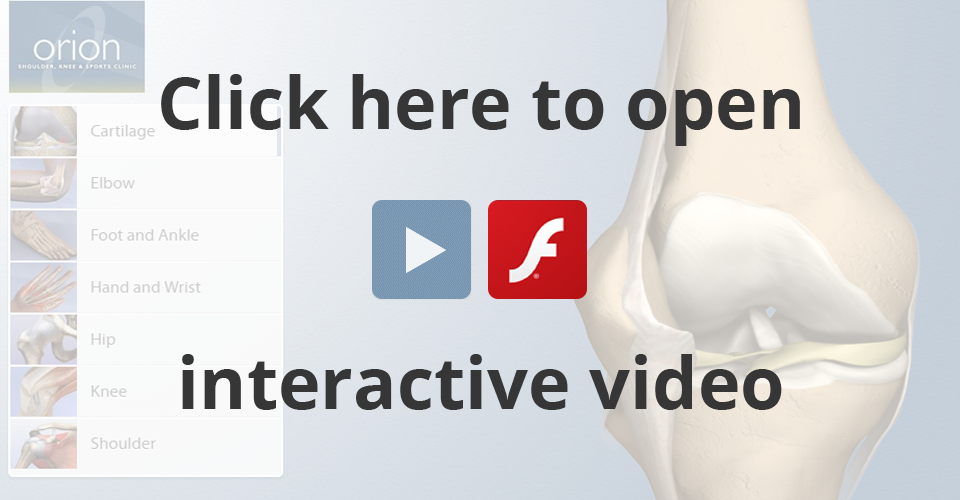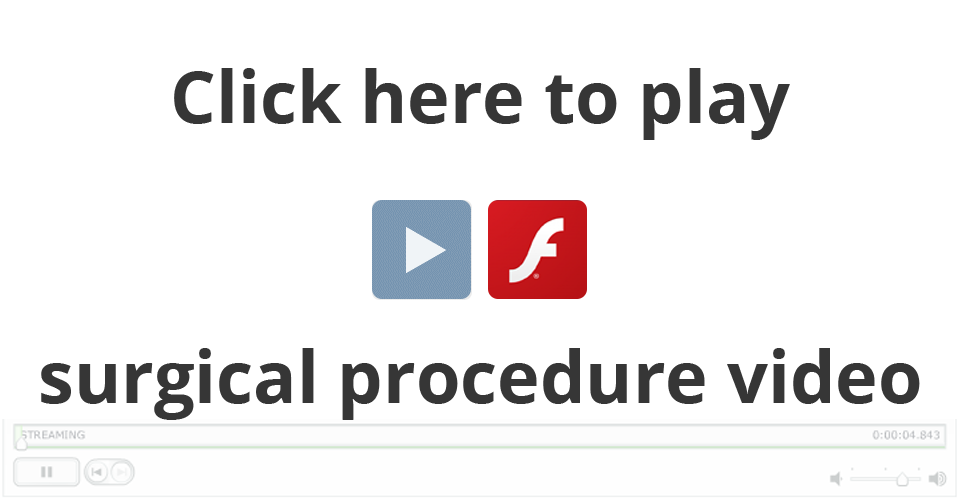Technological progress in computers, robotics and electronics has resulted in new aids in the field of medicine, particularly in Trauma and Orthopaedics. With the creation of advanced robotic devices and complex imaging, surgical procedures can now be carried out through less invasive techniques. This is known as 'minimally invasive surgery'. It essentially means performing surgery through small incisions which results in less pain, less blood loss and allows faster recovery for patients.
Computer assisted surgery (CAS), also known as 'surgical navigation', '3D computer surgery', 'image guided surgery' is a computer-based technique that uses 3D imaging and real-time monitoring in the planning and execution of surgical procedures in Trauma and Orthopaedics. This has distinct advantages over conventional techniques and allows for better visualisation, and improves the accuracy and precision of the surgical procedures.
In order to understand computer-assisted surgery, we need to understand the definitions. 'Navigation' is the process of planning, recording and controlling the movement of a craft or vehicle from one place to another. The word 'navigate' is derived from the Latin root 'navis' meaning 'ship' and 'agere' meaning 'to move' or 'to direct'. A 'robot' is defined as a computerised system with a motorised construction which is capable of interacting with the surrounding environment and which relies on the use of sensors that provide feedback data on the robot's current situation, and a system to process and modify the information to enable the next action to be determined and carried out. Although robotics is used in computer-assisted surgery, it does not mean that the robot is performing the operation. The actual operation is carried out by the surgeon who does it with the help of robotics to achieve precision and accuracy. Computer-assisted robotic surgery is therefore a technique that uses a computer and a robot as tools to help the surgeon carry out particular procedures.
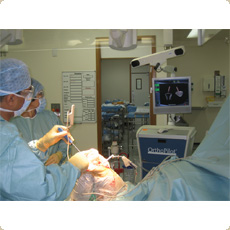
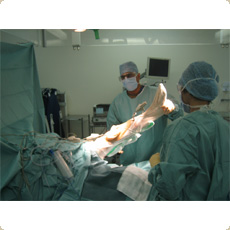
There are various steps that need to be carried out before the actual surgical procedure is performed. These include planning, registration and navigation. Computer-assisted surgery is now used to achieve precise and accurate results in knee, hip and spine surgery. The current scope of CAS for knee surgery includes:
- Primary total knee replacement
- Ligament reconstruction (anterior cruciate ligament)
- High tibial osteotomy
- Revision total knee replacement
- Cartilage injury mapping and grafting
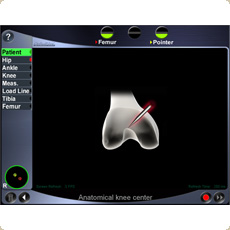
Registration of Bony Landmarks
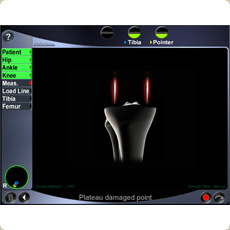
Reverse Total Shoulder Replacement
A successful outcome in total knee replacement depends upon precise alignment of the various components of the artificial knee, accurate soft tissue balancing and restoration of the normal kinematics of the knee. A number of studies have shown that the main cause of loosening in a knee replacement is mal-alignment of the various components. The incidence of loosening is approximately 3% when the alignment is considered good, whereas it jumps to 24% when the components are placed in mal-alignment. Current literature has confirmed that navigation results in superior alignment. If components of the knee replacement prosthesis are mal-aligned, early loosening occurs which in turn results in wear of the polyethylene and ultimately failure of the prosthesis.
Computer-assisted surgery requires the use of an assortment of hardware that includes a computer workstation, an infrared camera system, infrared emitters that can be either active or passive and a control foot switch. The hybrid camera system is extremely accurate up to 0.3mm and it works on the principle of advanced tracking algorithms and can determine 3D positions, and helps determine orientation of the bony structures around the joint. The measurements achieved are real-time and it works on the principles of triangulation with the help of the active or passive sensors.
- Computer Workstation
- Infrared Camera System
- Infrared Emitters
- Control Foot Switch
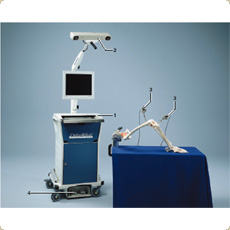
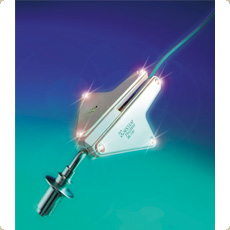
Navigation involves an accurate information flow process. The surgeon assesses the clinical condition and feeds the information to the computer system, which in turn analyses and processes the data and relays it back to the surgeon on a visible console. This allows the surgeon to then perform the surgery in an accurate and precise manner. The advantages of using CAS for knee replacement surgery include:
- Minimises surgical steps
- Allows real-time monitoring of knee behaviour
- Reduces the guess-work or so-called 'eye-balling ' phenomenon
- Allows precision surgery
- Does not require any additional time when compared to conventional knee replacement surgery
- Reduces the hospital stay as a result of early functional recovery
- Reduces post-operative pain
- Reduces blood loss
- Appears to be both cost-effective and clinically advantageous over conventional total knee replacement surgery
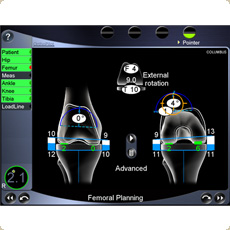
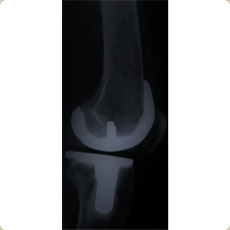
Final Planning in Knee replacement Surgery
In addition to knee replacement surgery, it is very useful in ligament reconstructions of the knee, particularly anterior cruciate ligament surgery, allowing precise and reproducible positioning of the tunnels and avoids intra-operative complications such as impingement.
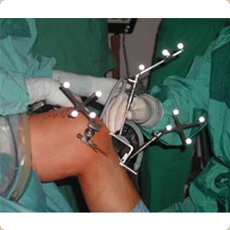
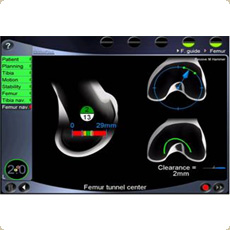
CAS for Arthroscopic ACL Reconstruction
It is also a useful tool in minimally invasive surgery and the surgical management of cartilage defects, enabling accurate sizing and mapping of the defect and accurate arthroscopic placement of cartilage grafts either in a cell suspension or a 3D matrix format.
Technology is becoming increasingly integrated into the medical system. From imaging systems to pre-programmed robots, every speciality is finding the benefits of these technological advances.
Contact Us Directly
Sarah Morris, Secretary to Mr PimpalnerkarReferral forms to download:

